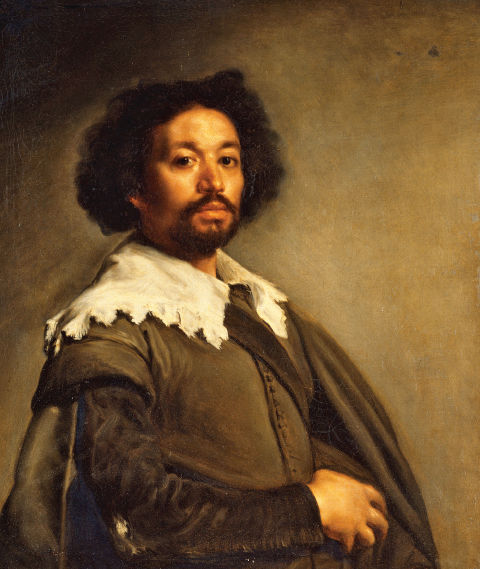Individuals in Society: Juan de Pareja

During the long wars of the reconquista, Muslims and Christians captured each other in battle and used the defeated as slaves. As the Muslims were gradually eliminated from Iberia in the fifteenth and sixteenth centuries, the Spanish and Portuguese turned to the west coast of Africa for a new supply of slaves. Most slaves worked as domestic servants rather than in the fields. Some received specialized training as artisans.
Not all people of African descent were slaves, and some experienced both freedom and slavery in a single lifetime. The life and career of Juan de Pareja (pah-
Pareja was born in Antequera, an agricultural region and the old center of Muslim culture near Seville in southern Spain. Of his parents we know nothing. Because a rare surviving document calls him a “mulatto,” one of his parents must have been white and the other must have had some African blood. In 1630, Pareja applied to the mayor of Seville for permission to travel to Madrid to visit his brother and “to perfect his art.” The document lists his occupation as “a painter in Seville.” Because it mentions no other name, it is reasonable to assume that Pareja arrived in Madrid a free man. Sometime between 1630 and 1648, however, he came into the possession of the artist Diego Velázquez (1599–
How did Velázquez acquire Pareja? By purchase? As a gift? Had Pareja fallen into debt or committed some crime and thereby lost his freedom? We do not know. Velázquez, the greatest Spanish painter of the seventeenth century, had a large studio with many assistants. Pareja was set to grinding powders to make colors and to preparing canvases. He must have demonstrated ability because when Velázquez went to Rome in 1648, he chose Pareja to accompany him.
In 1650, as practice for a portrait of Pope Innocent X, Velázquez painted Pareja. The portrait shows Pareja dressed in fine clothing and gazing self-
What does the public career of Pareja tell us about the man and his world? Pareja’s career suggests that a person of African descent might fall into slavery and yet still acquire professional training and work alongside his master in a position of confidence. If lucky enough to be freed, a former slave could exercise a profession and live his own life in Madrid. Pareja’s experience was far from typical for a slave in the seventeenth century, but it reminds us of the myriad forms that slavery took in this period.
Sources: Jonathan Brown, Velázquez: Painter and Courtier (New Haven, Conn.: Yale University Press, 1986); Grove Dictionary of Art (New York: Macmillan, 2000); Sister Wendy Beckett, Sister Wendy’s American Collection (New York: Harper Collins Publishers, 2000), p. 15.
QUESTIONS FOR ANALYSIS
- Slavery was an established institution in Spain. Speculate on Velázquez’s possible reasons for giving Pareja his freedom.
- In what ways does Pareja represent Europe’s increasing participation in global commerce and exploration?

ONLINE DOCUMENT PROJECT
How could an individual like Pareja experience both slavery and freedom in a single lifetime? Keeping the question above in mind, analyze sources from Pareja’s contemporaries that reflect changing ideas about racial identity and slavery, and then complete a writing assignment based on the evidence and details from this chapter.
See Document Project for Chapter 14.